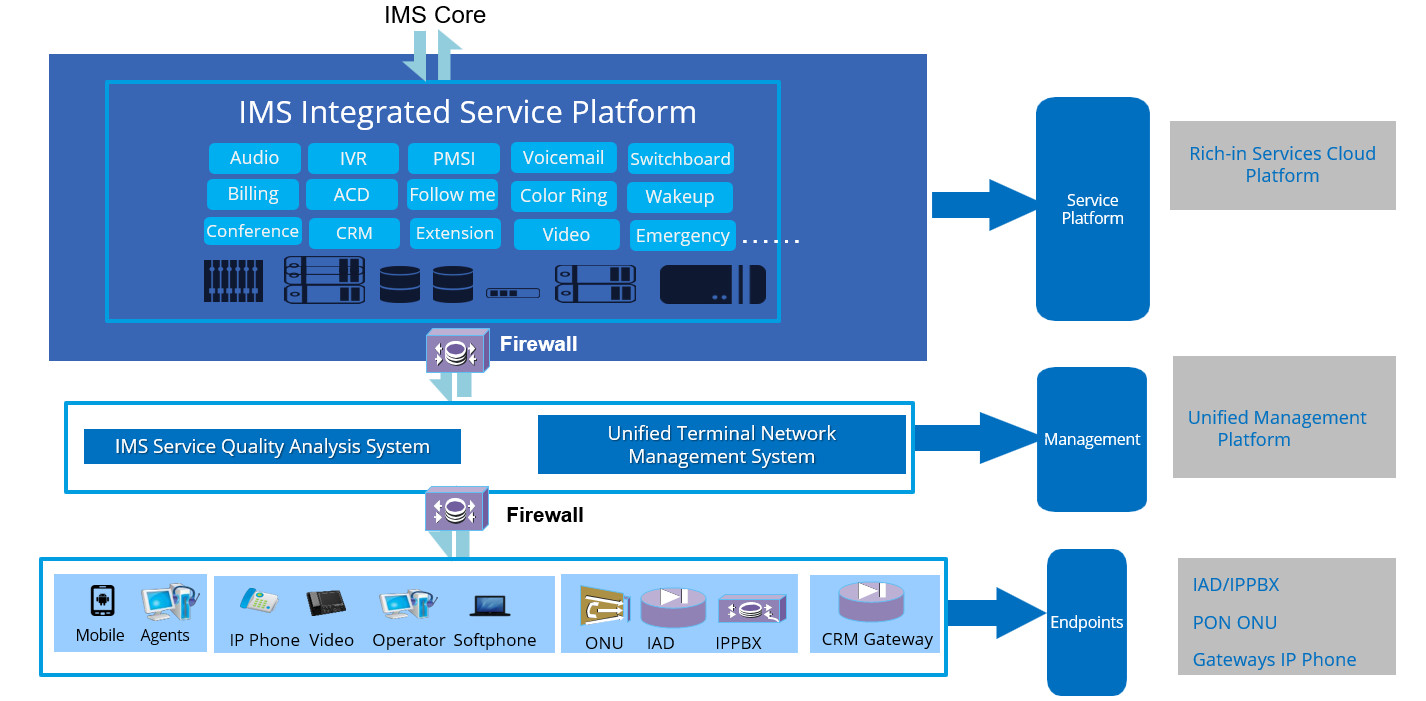UCS2000 Call Center
The UCS2000 Call Center supports multiple application services such as call center, emergency communication, IP PBX, CRM, recording storage and playback, and telemarketing, which solves the efficient communication, easy deployment, easy maintenance, and simple use between large, medium and small enterprises as well as special industry users and customers.
UCS2000 offers the following features:
- X86 architecture: X86 architecture refers to the type of computer processor architecture commonly used in personal computers, servers, and workstations. It offers compatibility with a wide range of software and allows for flexibility in hardware configuration.
- Flexible hardware configuration : with an X86-based system, hardware components can be easily configured and customized based on specific requirements. This flexibility enables the system to adapt to different needs and workloads.
- Easy deployment and capacity expansion:UCS2000 typically provide convenient deployment options and support for expanding capacity. This allows for efficient scaling of resources to accommodate growing user demands.
- Support for multiple users sharing a single system:UCS2000 can be designed to support multiple users sharing resources in a cost-effective manner. This can help reduce investment costs by maximizing the utilization of a single system.
- Support for encrypted functions:UCS2000 often provide support for encryption, enabling secure authentication and communication. This ensures the confidentiality, integrity, and authenticity of data exchanged within the system.
- Point-to-point communication for voice and video:UCS2000 can include functionality for point-to-point communication, both for voice and video. This allows users to communicate directly, enhancing collaboration and connectivity.
- Embedded firewall and security auditing: UCS2000 may incorporate embedded firewall capabilities and automatic call security auditing functions. These features help ensure the security and integrity of communications by monitoring and auditing calls for potential vulnerabilities or threats.
- Interoperability with wireless private network emergency communication systems:UCS2000 can be designed to interwork with wireless private network emergency communication systems. This interoperability enhances communication capabilities in emergency situations and enables seamless integration with existing infrastructure.
- Web-based real-time monitoring, maintenance, and network management :UCS2000 may provide web-based interfaces for real-time monitoring, maintenance, and network management. This allows administrators to efficiently monitor and manage the system, ensuring optimal performance and reliability.
Product details
Capacity
• Up to 50,000 SIP registration users and 5,000 active seats (WebRTC or SIP)
• Up to 10,000 concurrent calls (depending on the X86 hardware configuration chosen)
• Provide call center and enterprise PBX functions for more than 500 companies simultaneously
• For a hardware configuration of 1,000 seats, it is recommended to have 16GB DDR3L memory, 1TB system storage, and an X86 architecture Xeon E5 v3 2.4GHz frequency processor.
Call Center
• Incoming call screen pop-up
• Voicemail, Call queue, Callback reminder
• Remote agent login, SIP agent login
• WebRTC agent login, ACD
• Agent monitoring, Click-to-dial
• Conference call, Automatic outbound calling
• Satisfaction survey, Call statistics report
• Customization CRM
• Interactive Voice Response (IVR)
• Recording playback and search
• Questionnaire survey
Protocol
• Voice Codec: G.722, G.711(a-law, u-law), G.729,G.723
• Video Codec (Transparent): H.261, H.263, H.263+, H.264
• Protocol: IMS-SIP, SIP(RFC3261), IAX2
• DTMF: RFC2833, SIP INFO, In-band
PBX Functions
• Caller ID, Video call, Intercom
• DID (direct inward dialing)
• Multiple language versions
• Voicemail forwarding to email
• IVR (interactive voice response)
• Auto attendant
• Support for dynamic domain names
• Password-restricted calls, call recording
• Three-way calling conference
• Automatic configuration of IP phones
• VoIP Trunk, blacklist
• Busy line indication (BLF)
• Call transfer, call park, call routing, call forwarding
• Call hold, Call waiting

